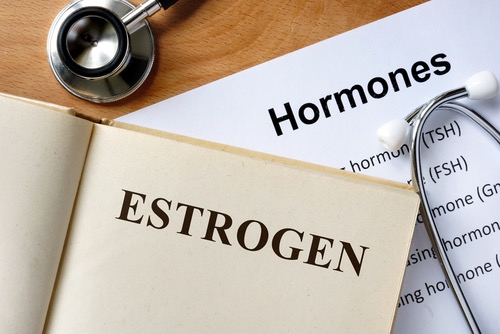In modern lifestyles today, testosterone is all the talk for women over 40, and though it has many benefits and is vitally important, it is not a woman’s primary hormone. Everything reacts with everything else. In the body, research has been touting for over a decade that all systems are highly interconnected. The complexity of health challenges, disorders, and diseases has demonstrated that medications, surgeries, addictions, and lifestyle patterns have consequences across multiple body systems, and this includes hormones. I encourage my clients to think of hormones as key departmental managers within a large company. To have success, they must communicate and coordinate their actions and processes together. This is a simplified explanation of what actually occurs in the body, but will serve for our discussion.
Hormones that women should consider for optimal health are neurotransmitters (e.g., serotonin, dopamine), estrogen, progesterone, testosterone, thyroid, pregnenolone, cortisol, insulin, catecholamines, and adiponectin (from fat cells). These are all important and, most important of all, is how well they all work together. It’s about so much more than just feeling good.
We are going to focus on estrogen, progesterone, and pregnenolone because they are often overlooked today in women over 40 in the shadow of testosterone BHRT. Their interaction together not only affects many systems, they also affect testosterone.
Let’s first consider pregnenolone, a hormone that comes from cholesterol and is a precursor to 17-hydroxyprogesterone, which leads to progesterone, or under excessive stressors, which leads to cortisol (stress hormone) production, which then depletes progesterone as a side effect.
What about progesterone? Many have assumed that after perimenopause or menopause, progesterone is not that big of a deal, now that you’re not menstruating regularly. However, this couldn’t be farther from the truth. Progesterone can also be converted to cortisol to support adrenals handling stress, and when it is low, it also contributes to hot flashes, sleep problems, anxiety, inconsistent periods, mood swings, lack of interest in sex, and less heart protection.
What about estrogen, the female’s primary hormone, or master regulator? Estrogen affects your rate of aging, skin, hair, nails, libido, moods, joints, muscles, cancer and endometriosis risk, fibroids, and cysts. Low estrogens also affect your mental abilities, hot flashes, bones, and immune efficiency. The lack of healthy estrogen balance will affect most systems in the body.
What interferes with hormonal balance? Imbalances in hormones can be caused by a wide range of factors, including cortisol, insulin, adiponectin, emotional stressors, lack of sleep, obesity, skinny fat, over-eating, excess sugar, alcohol, lack of exercise, lack of quiet, poor relationships, and various medications.
Here at BESANA we are all about helping you achieve personalized balance. Being healthy is not about perfection, it’s about balance and creating the right environments for optimal health, and initiating consistency in behaviors and patterns within those environments.
Come on in and let’s discover where those imbalances are and create the paths to limit aging while maximizing energy, health, and wellness! Schedule your consultation today by calling 303.327.7300 or request a consultation online today.
—Dr. Messer
Sources for this blog:
Hodges RES et al. J Nutr Metab. 2015;2015:760689.
Kohalmy K et al. Curr Drug Metab. 2011;12(2):104-123.
Yager JD. Steroids. 2014;99(Pt A):56-60.
Lord RS et al. Laboratory Evaluations for Integrative and Functional Medicine. Duluth, GA. 2nd ed. 2012.
Busserolles J et al. Life Sci. 2002;71(11):1303-1312.
Miller WL et al. Endocr Rev. 2011;32(1):81–151
